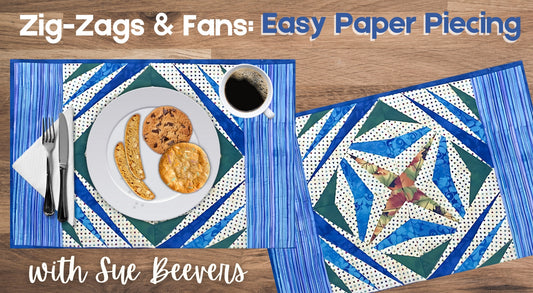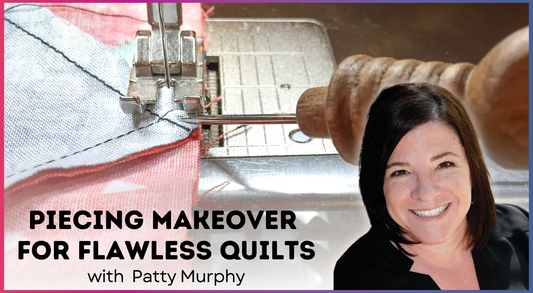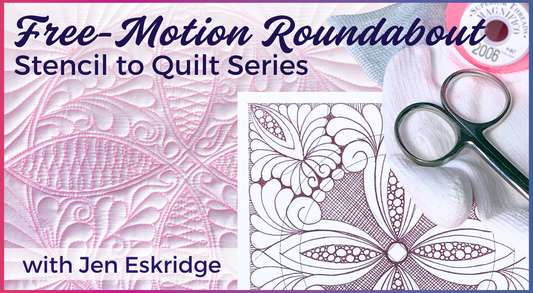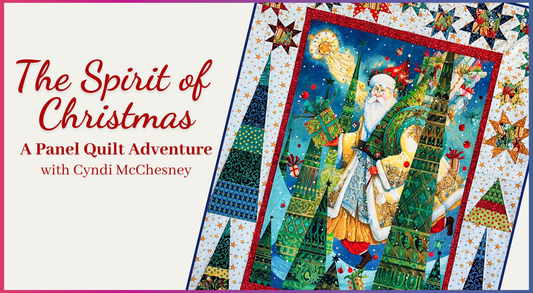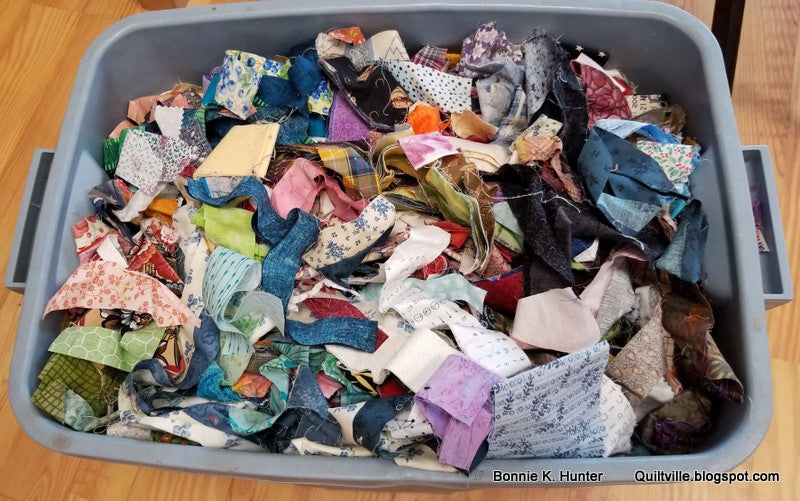
All Things Scrappy
Share
Hi everyone!
I’m excited to be here on the C&T blog today, talking about my love of all things scrappy, and most of all, my love of string quilts. It knows no bounds. It has no beginning and definitely no end. The list of projects containing string units dancing in my head goes on and on and on!
What is a string you say? Read on, friends—and I guarantee by the end of this post you will be running for your scraps and your sewing machine and find yourself EAGER to give this a try for yourself.
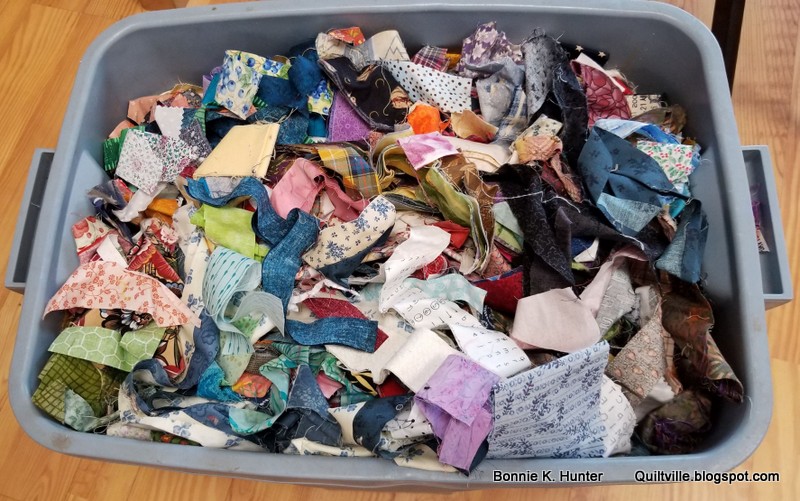
This is the ever-burgeoning, always up to the brim, and full to overflowing bin of narrow strips and pieces found next to the cutting table at my cabin, Quilt Villa in Mouth of Wilson, Virginia. I am never without a container of such strips on hand!
A string is simply a narrow piece of fabric usually deemed too small or of too little use to be saved by many—but I find my creativity soaring into high gear when I start thinking of things that these little humble bits can become.
A string for me fits in the very loose guidelines of 3/4" to 2" wide. Edges don’t have to be straight—they can taper and lean at will.
Strings are sewn to each other in a stitch-and-flip fashion, over a paper foundation such as newsprint, doodle pad paper, tracing paper, phone book pages (my favorite!), or even purchased foundation-piecing paper. Sizes and shapes of units are unlimited!
Squares, rectangles, triangles, even curved units such as Drunkard’s Path are greatly enhanced by cutting shapes from string pieced “fabric” versus plain fabric alone.
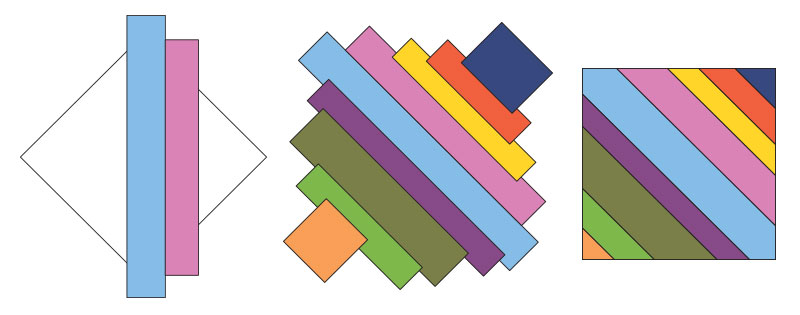
String piecing in a nutshell.
Build the string blocks, and cut to shape! It’s as simple as that, and highly addictive!
Hint: Trim units to size, and then carefully remove the paper before sewing the units into the block or quilt top. It makes paper removal much easier. Just treat the string units as you would any other patchwork unit, being aware that some string blocks may have bias edges and need to be handled with a bit of care. Respect the bias, but don’t fear it!
I start with a foundation paper the size of the unfinished unit I desire. If you have been following along with my current Quiltville Winter Mystery, Good Fortune, then you have seen some string piecing included in some of the clues. We were building string-pieced rectangles in three different sizes from two different color families:
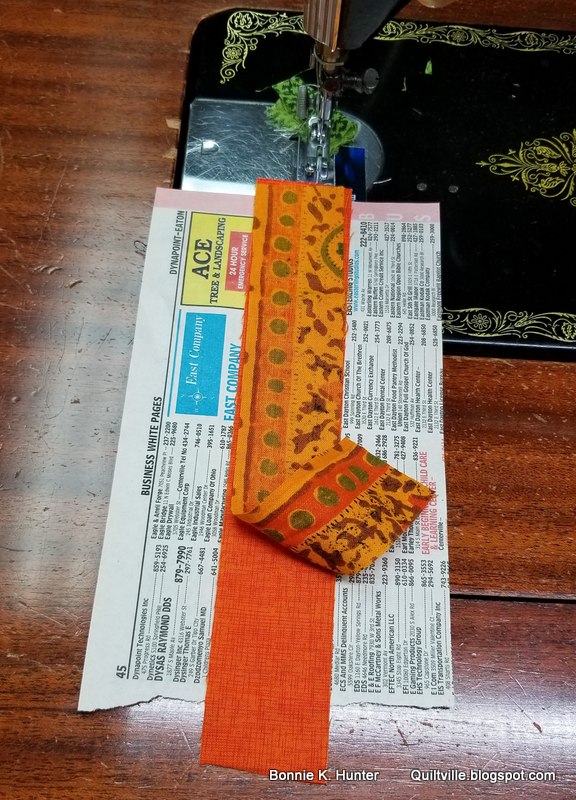
Strings may be sewn to the paper foundation on the diagonal or straight as shown. Place two strips right sides together down the center of the paper. Set stitch length to SMALL—1.5 on a digital machine or 14-16 stitches per inch on a vintage machine. Small stitches placed closer together through the paper will make paper removal much easier.
Using an approximate 1/4" seam, stitch the two strips through the paper. Fold out the top strip and press.
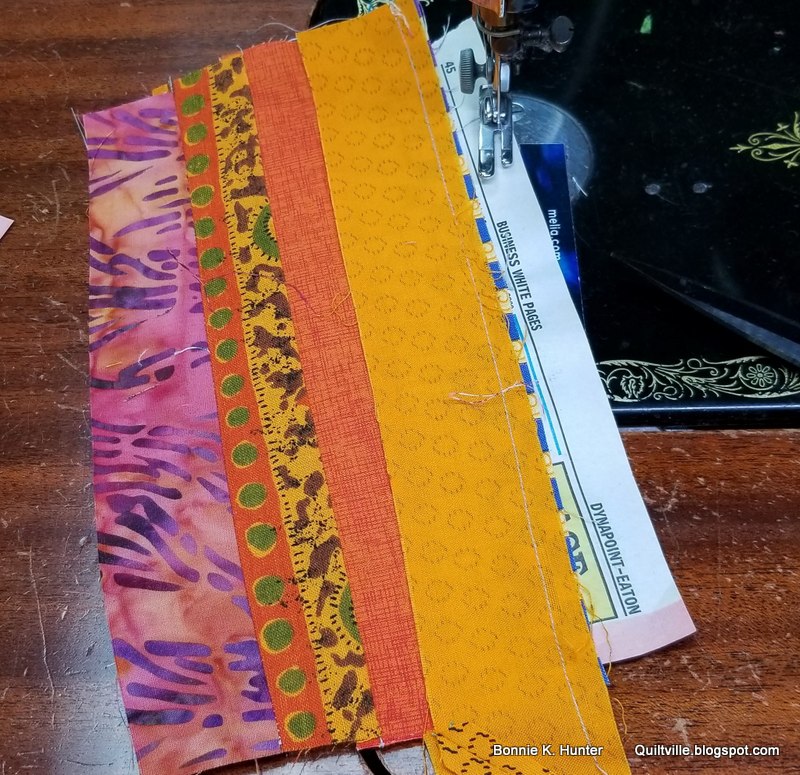
Continue to add strings to the block until the foundation is covered. In this case we were piecing a larger block so that we could trim smaller rectangles from it.
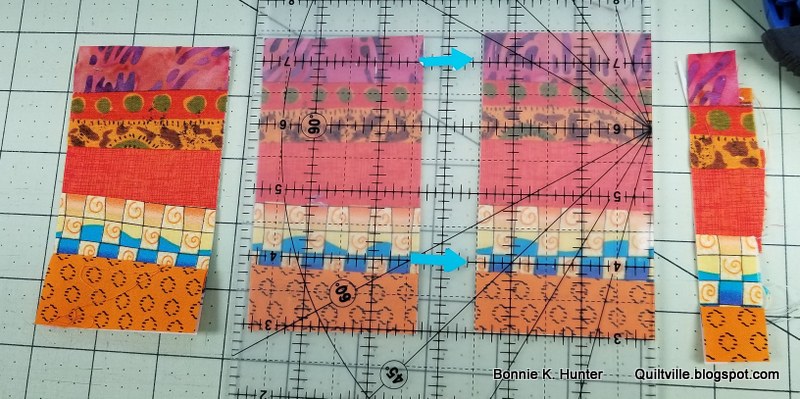
Trim units to desired size and use them in place of one-piece units.
I love mixing string-pieced units with traditional units such as half-square triangles, quarter-square triangles, four-patches, and other units, and you will find a good mix of recognizable blocks intermixed and mingled with string blocks in my new book String Frenzy.
One of my favorite ways of working with strings is to sort them by color family. Here is my Emerald City from String Frenzy in greens and neutrals:
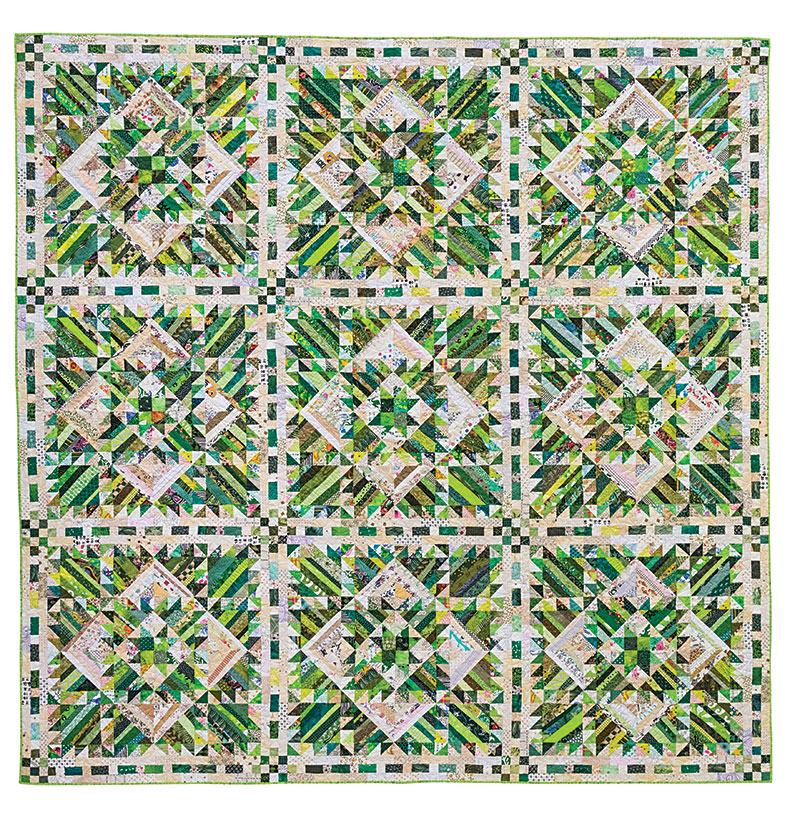
String units can be cut into triangles!
In this quilt, I made large string-pieced triangles, and surrounded them with a multitude of half-square triangle units cut easily from strip sets using my Bonnie K, Hunter’s Essential Triangle Tool.
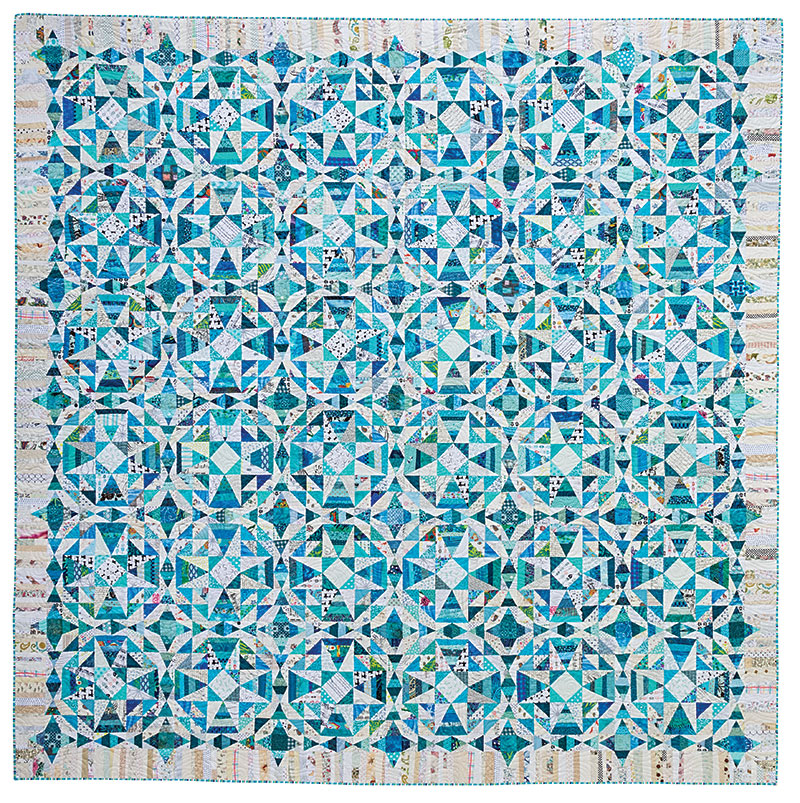
In my quilt Straits of Mackinac, the string piecing became the background of the star blocks. The variety achieved by string piecing makes my heart sing!
While two-color quilts are fun, how about a three-color patriotic round of scrappy string block play:
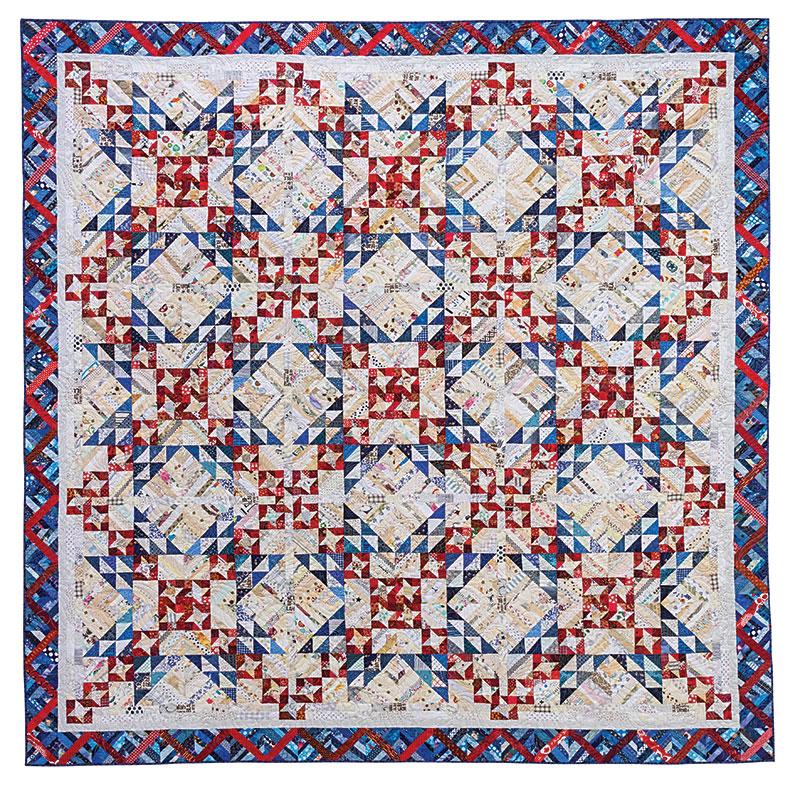
Dawn’s Early Light has three different string-pieced elements—small string squares pieced on the diagonal, larger string triangles (both of these are from neutrals—my favorite!), and a great border of blue string blocks with a red strip insertion that make it look like there is a ribbon winding around the quilt. The string blocks play, intermingling with traditional elements of half-square triangles and tiny Friendship Star blocks.
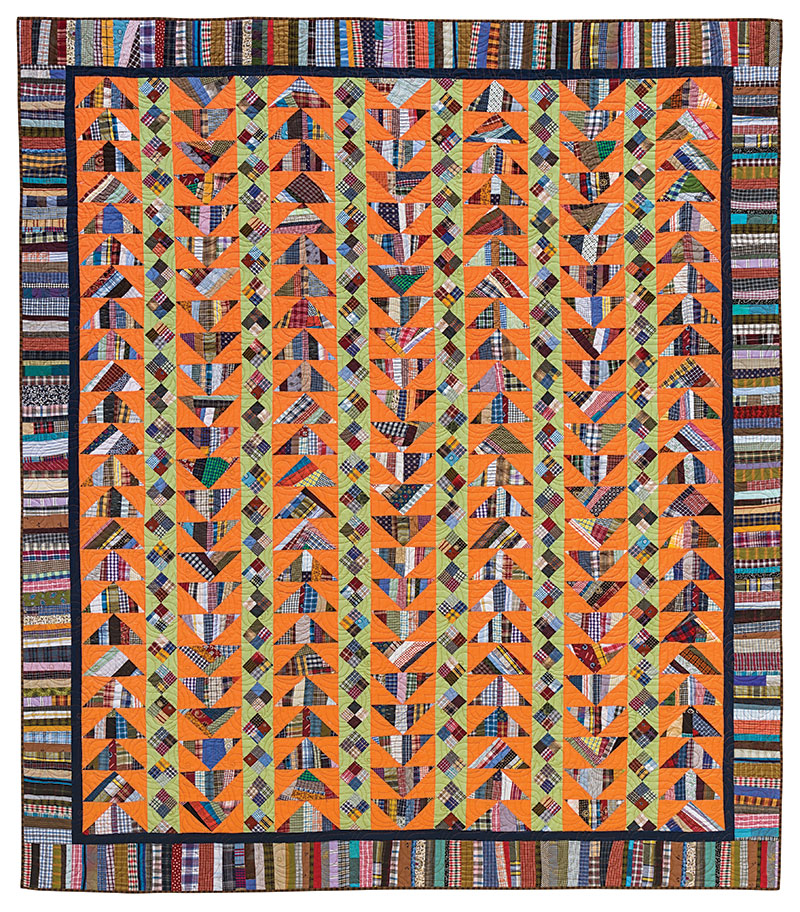
Strings can even be Flying Geese as shown in my quilt Geese on a String, where I used recycled fabrics from men’s shirts and some fun solids as background.
Is your interest piqued? I hope you will give string piecing a try. As for me—there truly is no stopping.
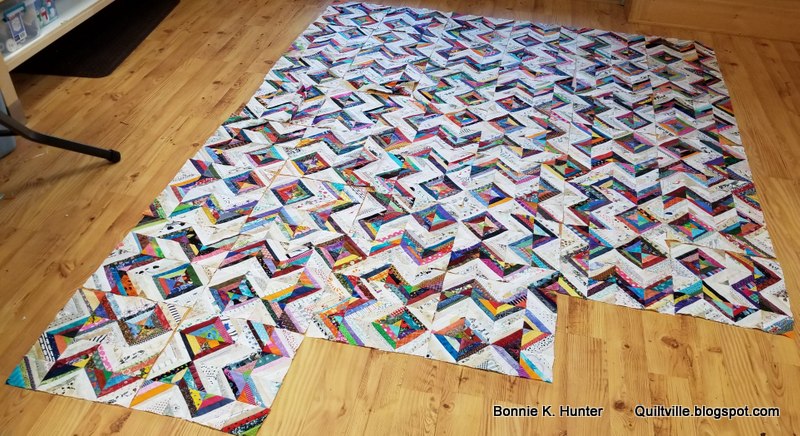
My current string project—no name as of yet!
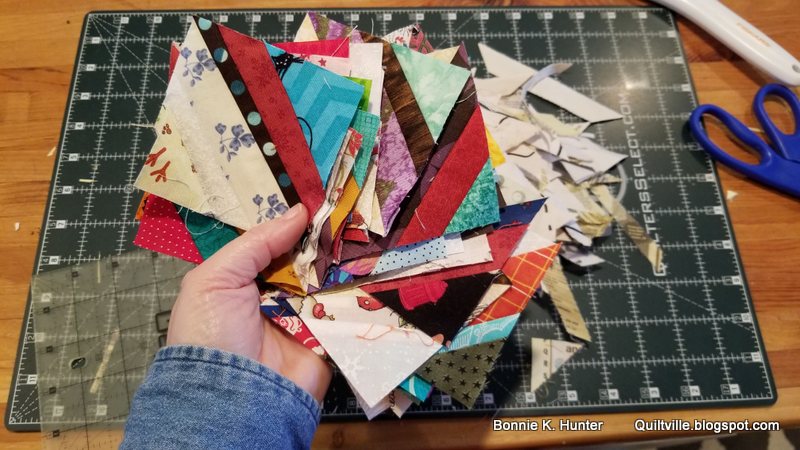
Like potato chips! You can’t eat just one—even a whole bag isn’t enough. And no, it doesn’t even begin to make a dent in the scraps.
Strings are the gift that keeps on giving!
These little squares are half light, half dark which means they can be placed in any log cabin layout, any triangle unit design—the ideas are swirling in my head.
I thought I was close to having enough to finish this top. I was wrong. I need ninety-six more. I better get busy!
If you love the twelve quilts and projects in my book String Frenzy, be sure to check out my String Fling book as well, also by C&T Publishing.
With my string quilt addiction in full swing, there may well be a third string-piecing book in the future.
Get scrappy!

